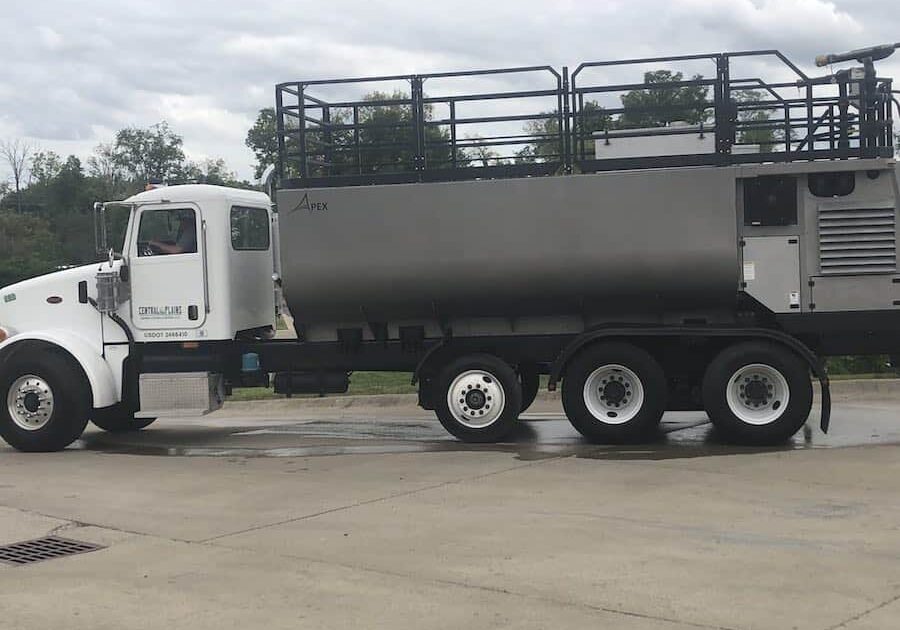Hydroseeding for Dust Control

Share this article!
For many large-scale and commercial projects, dust and dust control are essential areas of concern because municipal zoning and community requirements often specify dust control requirements for soil disruption projects. These specifications are typical in construction, agriculture, mining, and infrastructure activity because dust and other airborne debris pose potential health and environmental risks.
To keep communities and the environment as safe as possible throughout industrial construction, dust control methods, like hydroseeding for dust control, can help ensure a successful project with minimal impact on the surrounding landscape and population.
Hydroseeding is a Better Dust Control Method than Water
Water is often considered a first line of defense against dust and is a standard dust control method. However, water is often an expensive solution in terms of time and resources. In addition, water doesn’t always provide the optimum level of dust control, especially if conditions are hot and dry. Due to evaporation and other soil or site conditions, water may also need to be regularly re-applied to be effective.
Hydroseeders Quickly and Thoroughly Apply Dust Suppression Materials
Hydroseeders, by comparison, can quickly and evenly apply specially-tailored dust control materials, from tackifiers and soil stabilizers to seeds, mulch, and even small vegetation, depending on the equipment. These hydroseeding dust control methods work well in many applications, so regardless of the conditions you’re facing, you can usually find a hydroseeder dust control method well suited for your project. Hydroseeding for dust control also reduces the time dedicated to dust control strategies, as these materials typically require only one application for effective dust control.
Dust Control Applications for Hydroseeders
Hydroseeding for dust control is used effectively in large commercial projects because it’s efficient and effective at reducing dust as a byproduct of soil disrupting work. Since many industries rely on soil disruption to conduct their business, dust prevention measures help them comply with local zoning requirements for dust and airborne debris.
Mining
Mining operations generate dust by transporting, loading, unloading, and blasting or crushing materials. When these activities occur in open-pit mining operations, the likelihood of airborne dust pollution is higher than in pit or enclosed mines. However, dust and dust control is also a concern in these mines.
Hydroseeding for dust control in mining operations helps reduce dust pollution for the community and helps keep conditions safer for workers. Specialized formulas are used in hydroseeders to target the type of debris, and its unique needs for pollution and dust mitigation.
Construction
Like mining, large commercial construction projects generate dust and pollutants subject to local regulations. Whether it’s highway construction, commercial buildings, or excavation projects, industrial construction contractors use hydroseeding for dust control to effectively limit dust pollution and meet regulations set by regulators.
Farming and Agriculture
Large farms and agricultural operations also deal with dust control issues. While facing many of the same health and regulatory issues as mines and construction, dust can also cost farmers and operators time and money. Dust pollution can prematurely age equipment, cause illness and, in extreme situations, dust explosions. By limiting dust through hydroseeding, farms can run more safely and efficiently.
Landfills
Landfills are strictly regulated at the state and federal levels to ensure byproducts like dust and airborne debris don’t pose a health or environmental threat to the surrounding community. Landfill operations produce dust and other airborne pollutants that must be controlled to meet regulatory requirements. Hydroseeding for dust control in landfills has proven an effective and efficient method to bring landfill operations within requirements while keeping operations at or below budget.
Choosing the Best Dust Control Hydroseeder
For dust control methods, like hydroseeding, to be effective, choosing the right equipment for the job is essential. That’s why Apex products are specifically designed with versatility and durability in mind.
Large Projects
Construction projects like highways or oil pipelines, large landfills, mining operations, land reclamation, and fire suppression are common use cases for large project dust control equipment.
The Apex XA3300, XA4000, and XA5000 are designed to handle large projects quickly and easily. Built to be low maintenance, versatile, and powerful, the XA3300, XA4000, and XA5000 models are hydraulically-driven with a military-grade aluminum tank top and a maximum spray distance of up to 325’. The XA3300 model comes with a working capacity of 3,260 gallons, while the working capacity of the XA4000 is 3,950 gallons, and the XA5000 is 4,740 gallons.
Small to Mid-Sized Projects
Projects like residential landscaping, golf courses, sports fields, and other small commercial construction generally fall into the category of small to mid-sized dust control, and can often be handled by a more compact hydroseeder like the Apex XA1200.
The Apex XA1200 has a 1200 gallon tank, perfect for mid-sized jobs, and a working life of more than 2000 hours.
Whatever your dust control equipment needs, there’s an Apex hydroseeder that can help you get it done, faster. For more information, download our product’s technical details, or contact us today.
